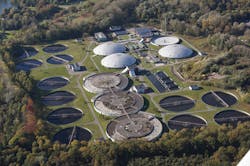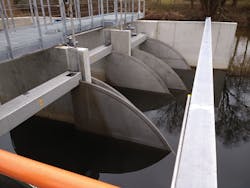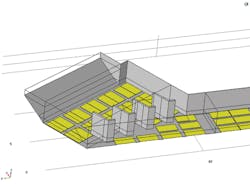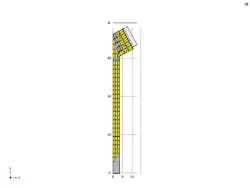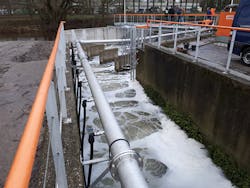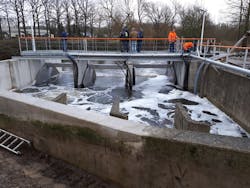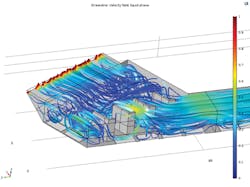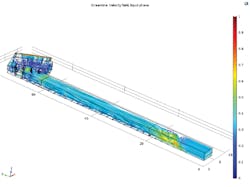Aerial view of the Eindhoven Wastewater Treatment Plant.
As part of this effort, the Water Board introduced an aeration system to further increase the oxygen level of the biologically treated wastewater effluent before it merges with the river. “The purpose of adding this aeration system was to protect the ecosystem of the Dommel from the damaging effects of hypoxia,” Flameling explained.
At the wastewater treatment plant, before aeration, nutrients and solids are removed in pre-sedimentation, activated sludge, and clarifying processes. To minimize energy requirements, water is maintained at a height that keeps the water moving throughout the plant.
To understand how adding aeration would affect the flow, Flameling conferred with Ronnie Berg, a consultant with Tauw specializing in process technology and water management.
“If the water height in an effluent channel is too low, the oxygen transfer is ineffective. On the other hand, if the water height is too high, then there exists the unpleasant possibility of overflow from the aeration channel back into the clarifier, contaminating the outflow,” Berg explained.
Another potential problem is water height that is too low for the water treatment processes to be operative. Knowing the flow profile in the effluent channel and associated outflow channel, the Water Board could determine how best to optimize the system for maximum aeration.
